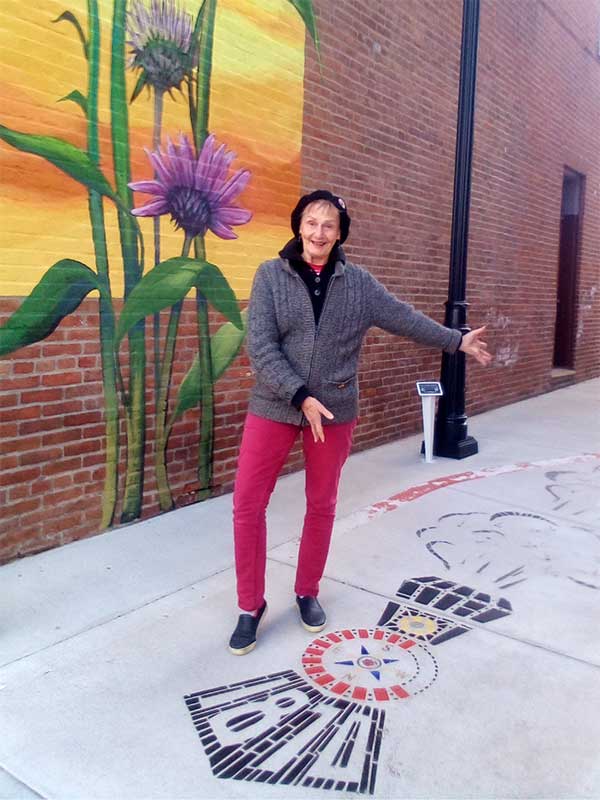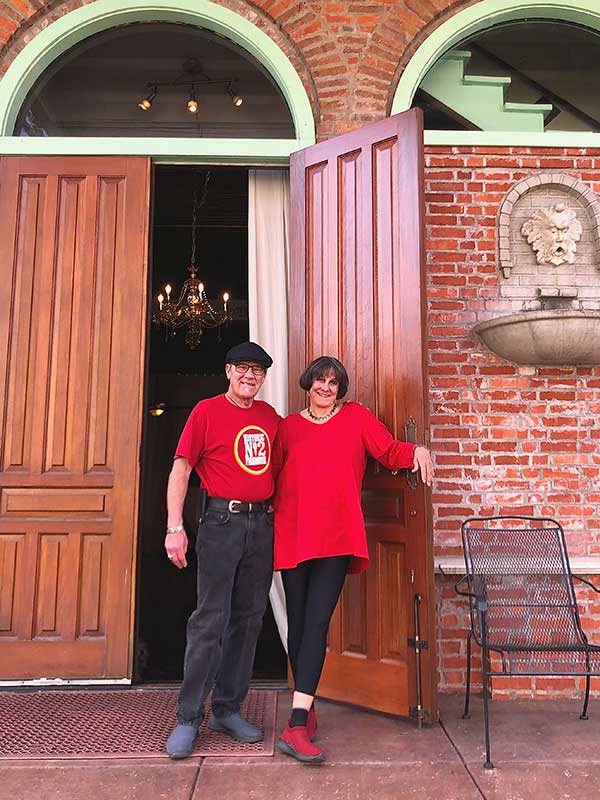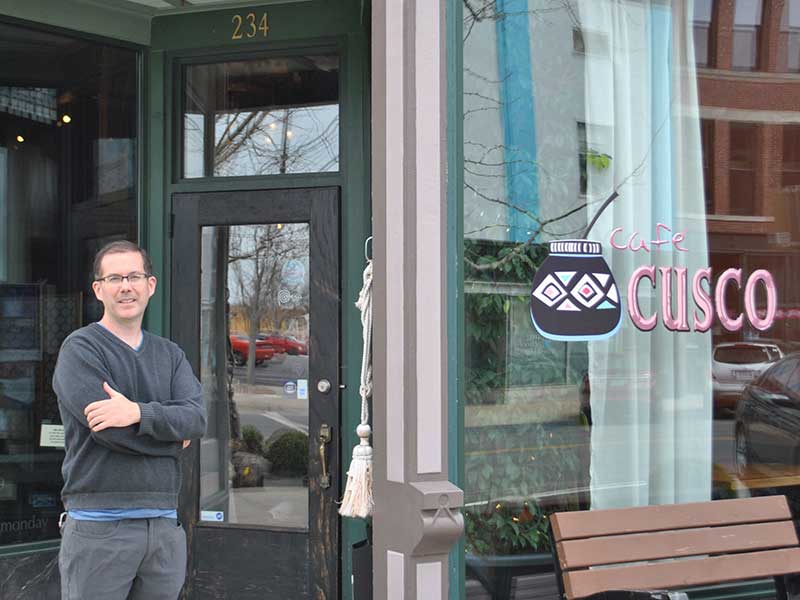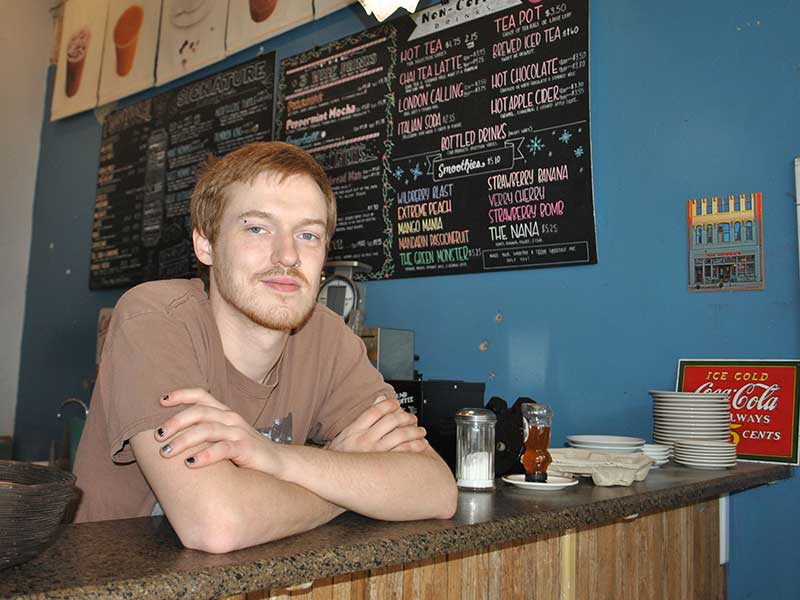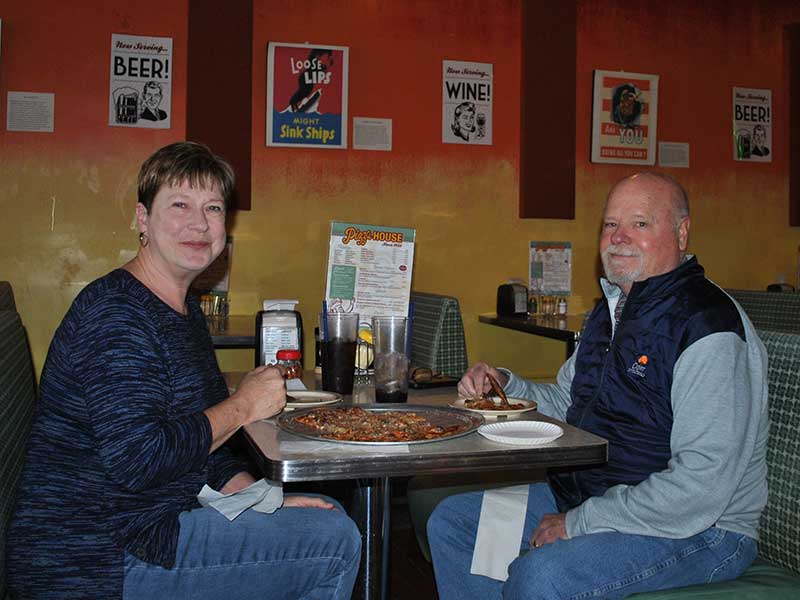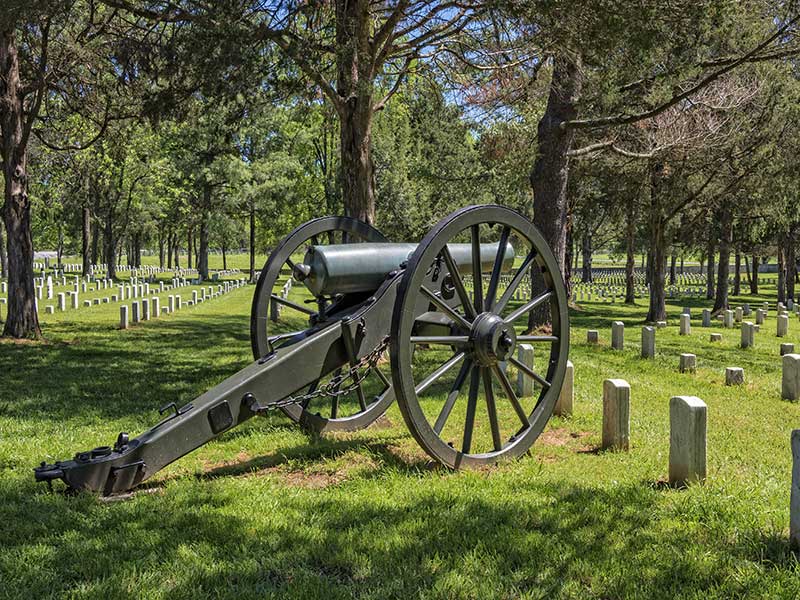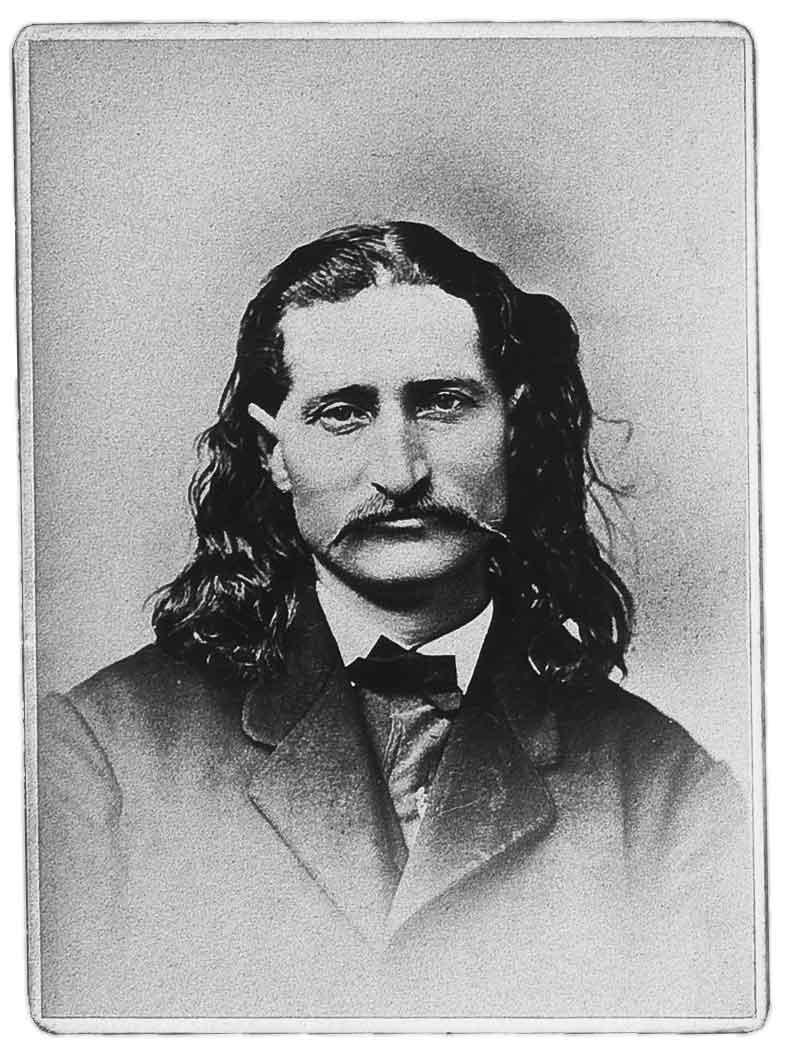Eclectic north side neighborhood is a mosaic of stories
Stand at the east end, and you’ll see a chocolate factory next door to a 125-year-old family-owned hardware store, both facing railroad tracks laid more than 150 years ago. At the west end a half-mile away, there’s a craft brewery on one side of the street—and a boxing gym, tattoo shop, vintage boutique, mountain bike service shop, and pub on the other.
In between, along the six historic blocks Springfieldians fondly call C-Street, you can find everything from antiques and flea market treasures to handmade pottery and thirty-three kinds of sea salt at a tea and spice store. You can sip coffee, have lunch in a Victorian tearoom, and dine on Cuban, Dutch, Italian, Lebanese, or Peruvian food—or order from menus at Springfield’s oldest tavern or pizza shop.
Want more options? Take a walking tour of open-air art on mosaic-studded sidewalks, join a community dance, or buy some rollerblades and skate—just like 16-year-old Naomi Waterland did one warm March afternoon.

“My parents actually got married on C-Street, so that’s why we moved close to here,” Naomi says, pausing near a new tattoo shop in a building that housed a cleaning service more than a century ago. “I’ve been in love with it since I was 12.”
Spend some time in this district—on the National Register of Historic Places since 1983—and you’ll find plenty of old-timers as well as newcomers who share her passion for the north-side neighborhood.
History, art, and railroads.
“There’s just something about the street that reels you in,” says Connie Rhoades Hinds, director of the C-Street Merchants Association. Fifteen years ago, Connie moved her then-advertising business from the suburbs and now publishes a pet magazine from a loft office above a yoga studio.
Maybe that’s because it’s six blocks full of stories: Everyone on C-Street has one, she says.
They’re stories about people enchanted by railroads and once-undervalued turn-of-the-20th-century buildings, about people touched by neighborliness sometimes hard to come by in suburbia.
Christine Kraemer Schilling, owner of MosaicaRose, a sculpture garden and art studio, and a C-Street resident for more than thirty years, likens the street’s eclectic people to her favorite art form: “We’re a mosaic of lots of different parts and pieces.”
Or, as Mary Collette says, pausing: “It’s like the Wild, Wild West.
“People come up here that are willing to take a chance.”
A 1980s renaissance
Forty-two years ago, Mary was one of them.
The president of the Commercial Club, a more-than-century-old civic organization devoted to promoting, preserving and beautifying C-Street, Mary sits at a cocktail table under a chandelier in Historic Firehouse No. 2, an events venue she owns and operates with her husband, Paul Parker.
The 1902 building is one of seven C-Street properties they’ve renovated since 1980, when Mary, a recent then-Southwest Missouri State University graduate, drove to a Commercial Street license bureau to renew her driver’s license. The daughter of a U.S. Air Force veteran, Mary had grown up in Europe and Kansas City before attending college in Springfield.
“In Europe, everything is old, and the things that are cared about the most are the things that are oldest,” she says. “I never saw anything that was old when I was in college until I came up here and I saw that there was this little district I didn’t know anything about. And I was just attracted to it. And it was really very exciting.”
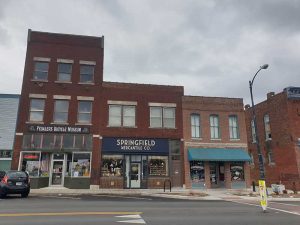
Mary gestures across the street, toward a two-story brick building now occupied by a honey products store, and recalls purchasing it for the same $250 a month she had been paying to rent a small house for her fledgling graphic design studio and living quarters.
Later, she says, Paul proposed to her on the roof.
Besides having medical offices, and its own post office, C-Street in the early 1980s was “actually kind of rockin’ and rollin’,” she says. “There was a beautiful little renaissance. There were a lot of young people moving up here; there were a lot of artists.”
One was Christine, who calls Mary a “visionary.”
“She actually encouraged her friends to buy buildings,” says the longtime Springfield artist, who purchased three of C-Street’s only late-19th-century buildings that escaped turn-of-the-20th century fires.
Along with others, they rolled up their sleeves, gutting old buildings and resurrecting them as businesses and living spaces. Loft residents opened their doors for tours. One by one, murals, mosaics and sculptures adorned public spaces.
“The goal was always to make it beautiful and to save the historic nature of the Ozarks,” Christine says. “Little by little, we created a place that was interesting to live in, and we did it all as volunteers.”
Some might argue that C-Street has always been interesting.
North Side vs. South Side
A Gilded Age railroad boom town, it was more like the Wild North—of Springfield, that is—when the new Atlantic and Pacific Railroad came to town in 1870. Then, the city’s boundary ended just south of there. When local railroad investors couldn’t persuade “Old Town” leaders to buy their property for a depot within city limits, those investors founded North Springfield—and sold part of their land to the A and P.
Sharon Cates—a “south-sider” whose late husband was a “north-side” boy—studied C-Street history while serving on a historic sites board.
“Some founding fathers got together and decided they were going to make money on the railroad. And the people downtown thought they were going to make money on the railroad,” Sharon says. “And not so. They ran the railroad through here, and then they made money on all the land that was adjacent to the railroad. If it had gone through the square, those merchants would have profited.”
That split the town, she adds—and 19th-century historian R.I. Holcombe’s account in History of Greene County, Missouri, 1883 reflects the resulting rancor: “But for the stinginess and selfishness of some of the moneyed men of old Springfield,” he wrote, “the busy town of North Springfield, with all of its importance, would never have existed.”
Four years later, North and South Springfield merged, yet C-Street remained important for decades after the St. Louis-San Francisco Railway Co.—the Frisco—took the A and P’s place. Photographs and postcards show horse-drawn carriages and an electric trolley, then automobiles, along a thoroughfare lined with grocers and drugstores, clothing stores and cleaners, hotels and restaurants.
Even after suburban shopping centers lured customers away in the 1960s and 1970s, C-Street was still thriving when Mary discovered it.
“There were doctors’ offices, dentists’ offices, hair salons,” she recalls. “I mean, everything was happening up here in terms of it being this really sweet little small neighborhood.
New neighbors
Then, in 1985, the vacant Missouri Hotel became home to The Kitchen, Inc., a Springfield nonprofit that provided food, medical services, and shelter for homeless people. Built in 1927, it was once called the Greene Tavern and “considered to be the finest hotel west of the Mississippi,” Springfield-Greene County Library records say.
However, after the hotel became a shelter and two other C-Street shelters opened, tensions developed. Turned away from shelters if they had been drinking or using drugs, some unsheltered people stayed on the street after dark, Mary says.
Others left behind litter. Some merchants set out trash cans, Mary says, yet businesses began to leave the street.
Mary is quick to praise advocates for homeless people, saying, “There has been an unbelievable amount of very good work done by all of these facilities.” Still, she served on the Springfield City Council for eight years to push for a zoning ordinance that now limits the number of people one facility can shelter as well as shelters’ proximity to businesses and residences.
About the same time, more grants and federal funding meant The Kitchen could refocus on developing stable, permanent housing for clients, says The Kitchen CEO Meleah Spencer. In 2015, Missouri Hotel closed as a shelter; today, one shelter, Victory Mission, remains on C-Street.
“The challenge has been to coexist and keep a balance,” Connie says. “We need those people to know that they can find the services there, but we need people who are going to Big Momma’s (Coffee and Espresso Bar) or a wedding at The Savoy to feel like it’s a safe place to go.”
Perception changes.
But changing other Springfieldians’ perceptions about C-Street has been an uphill battle ever since the railroad boom days.
“Skid Row,” Mary says. “Some people still think it is, and for some people, that will never change for them.”
Tourists, on the other hand, have long been drawn to the district. In 2012, when Martha “Marty” Cooper and Gina Cooper opened Sisters in Thyme Bakery and Deli, they served diners from England, Ireland, Scotland, and other countries.
“The goal was always to make it beautiful and to save the historic nature of the Ozarks.”
“I even had a map because there were so many people from the world that came to Commercial Street—and this is when Springfield wouldn’t even come to Commercial Street,” says Marty. She and Gina now own Basilico Italian Café.
Focusing marketing efforts on out-of-towners, not locals, has worked for decades, Mary says.
“We don’t need everybody to think it’s not Skid Row,” she says.
Connie agrees: “Now, the goal is to help people enjoy every minute they’re here.”
Architecture matches vision
Enchanted by its old buildings, newer merchants have also gravitated to C-Street during its recent renaissance.
Oklahoma City native Rod Pickett was about the same age Mary had been in 1980 when he visited in 2005, not long after graduating from Missouri State University. A former college football player, Rod had become a barber.
When he walked into 223 E. Commercial, with its high ceilings tiled in ornate tin, he knew it was the perfect site for an upscale shop.
“That’s when I realized that this was it,” says Rod, 41. “I didn’t even look anymore. I had a vision of what it could be.”
Four years later, Blu Styles Barbershop opened; last year, Rod bought the building.
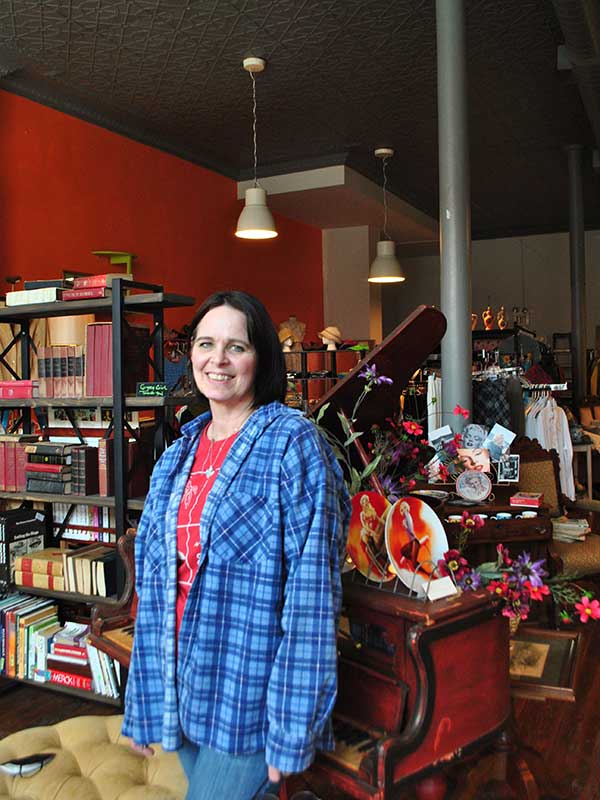
One new merchant was once close to being homeless.
Growing up in Springfield, Michelle Stracke heard older family members—including her grandfather—talk about shopping on C-Street when they were younger. By the time she was a teenager, though, the 53-year-old was told “not to ever go to Commercial Street, because it was a wild place,” she says.
Then 17 years ago, Michelle’s marriage ended, leaving her with no money, no car and no place to live. She and her two children moved in with her mother, and for almost two years, Michelle went to C-Street for counseling.
Sometimes, she’d buy coffee and walk.
“I’d walk up and down the street, and this was my favorite place in Springfield,” Michelle says of 225 E. Commercial, where she opened Gypsy Girl Junk Antique Store with swap meet finds during the pandemic. “I always felt the safest here. It was kind of weird. There was nothing here. But I guess I saw potential.”
Potential is also what Joseph Gidman envisioned in 2013, when he opened Peruvian restaurant Café Cusco with his parents, Mark and Claire Gidman.
Joe’s parents knew C-Street through their volunteer work there at a soup kitchen.
“We looked at the building here and kind of fell in love with it,” Joseph says of the building, the site of Rose Book Store in 1910. “Even though this street was nothing like it is now, there was really a small community here that was willing to make it work.
He adds, “We felt the people up here had the vision and desire to make something of themselves regardless of what was happening in the community and the world.”
In fact, the Gidmans hired some of the people they met on C-Street to staff Café Cusco.
“I have cooks who have been with me since 2013 who were homeless on the street when we started,” Joseph says, adding that some have stayed, buying homes and raising their families in the district.
Progress and challenges
Today, colorful banners, landscaping and smoother sidewalks and streets reflect the vision of C-Streeters.
A Community Improvement District, or CID, since 2009, C-Street receives sales tax funds for marketing as well as landscaping, lighting, snow and trash removal, safety and security, and public transportation to center-city events.
Because it is now a Tax Increment Financing (TIF) district, too, the city widened its sidewalks and repaved streets, Connie says. Soon, there will be $655,000 in other improvements and additions, including directional signs, parking lot upgrades, public art, and design updates to the historic Jefferson Avenue Footbridge.
Restoring the bridge that greets westbound visitors is the next challenge. Built in 1902 and on the National Register of Historic Places since 2003, it’s a community treasure spanning 13 sets of now-Burlington Northern Santa Fe tracks.
And for more than a century, it connected C-Street with north-side neighborhoods.
Then it closed in 2016, after city inspectors discovered corrosion and steel loss and deemed it unsafe. When bids to restore the bridge came back last fall at close to $6 million—almost twice a pre-pandemic estimate—C-Streeters were discouraged and frustrated.
That doesn’t mean they’re giving up: The Commercial Club has already raised $50,000 for repairs to the bridge, and in March the city council voted to apply for $8 million in federal grants to refurbish it.
The bridge is integral to C-Street, Christine Schilling says: “What would Paris be without the Eiffel Tower?
On C-Street, she has learned, “You cannot rest on your laurels.”
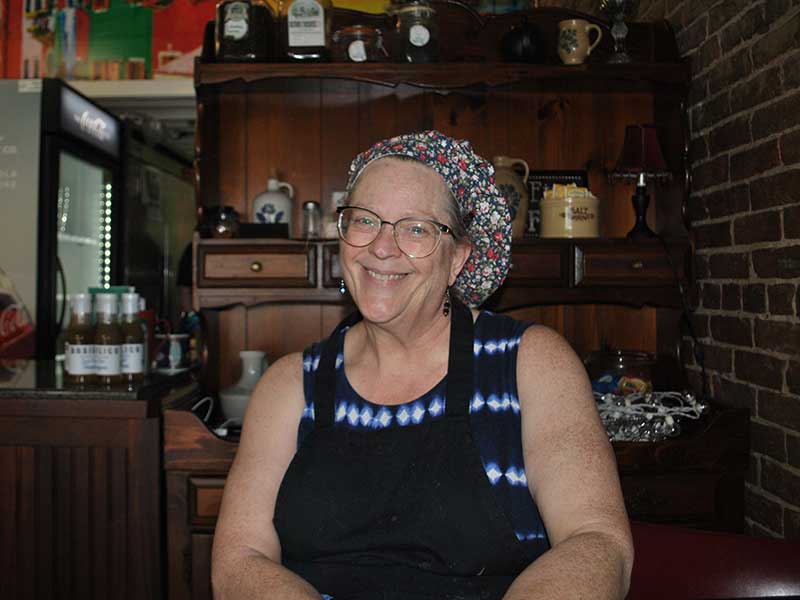
Strength of community
Yet Christine and others say it isn’t so much the architecture but the caring people of C-Street who make it strong.
“The thing about this street is the people are family,” Marty says.
Existing merchants help new businesses with major undertakings like moving into vacant retail spaces on the street, yet the little gestures of fellow C-Streeters also leave lasting impressions.
As she and Gina worked to open Basilico Italian Cafe, Marty would see a shadow on the street side of the restaurant’s papered-over door: “I kept seeing this shadow come to the door and leave, come to the door and leave,” Marty says. “And then finally, a knock on the door.”
Turns out, it was another C-Street restaurant owner, there to donate dishes and glassware.
Likewise, after the pandemic began, Joseph, like other restaurateurs, wondered how Café Cusco was going to make it. Then one day, he showed up “and the mailbox in front of the restaurant was stuffed with cash,” with notes for staff, he says: “There’s no neighborhood or street or area you would find that.”
Marty agrees: “I can’t imagine myself anywhere but on this street. It’s just family.”
Someday, Naomi says, she would like to be part of that family, perhaps working in the C-Street’s new skate shop. For now, she’s just happy that the street is smooth enough for her rollerblades.
“It’s much easier to skate on a paved road,” she says.
Related Posts
March 25, 1934
Springfield golfer Horton Smith wins the first-ever Masters. He pulled through with a one-stroke victory in the four-day tournament.

